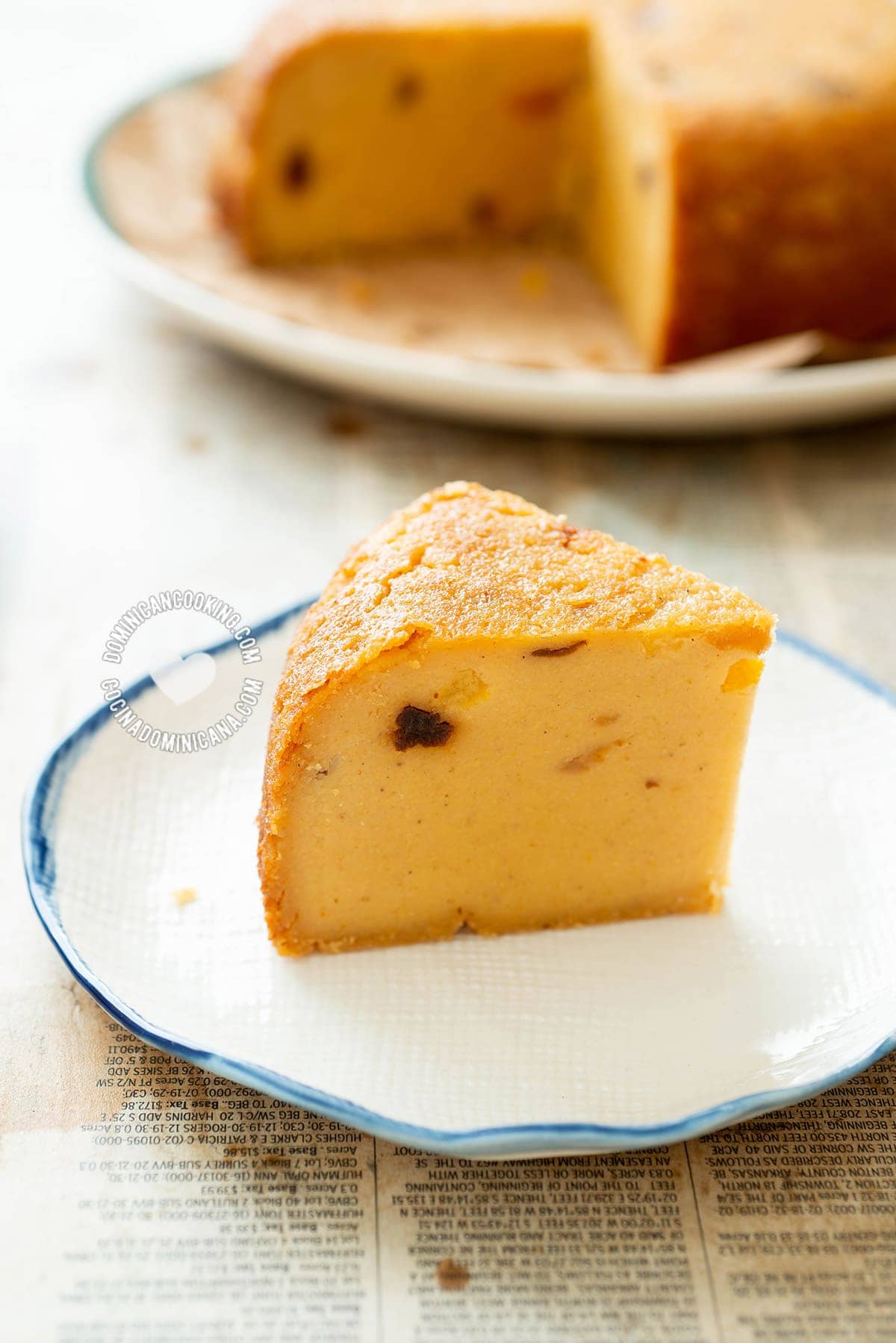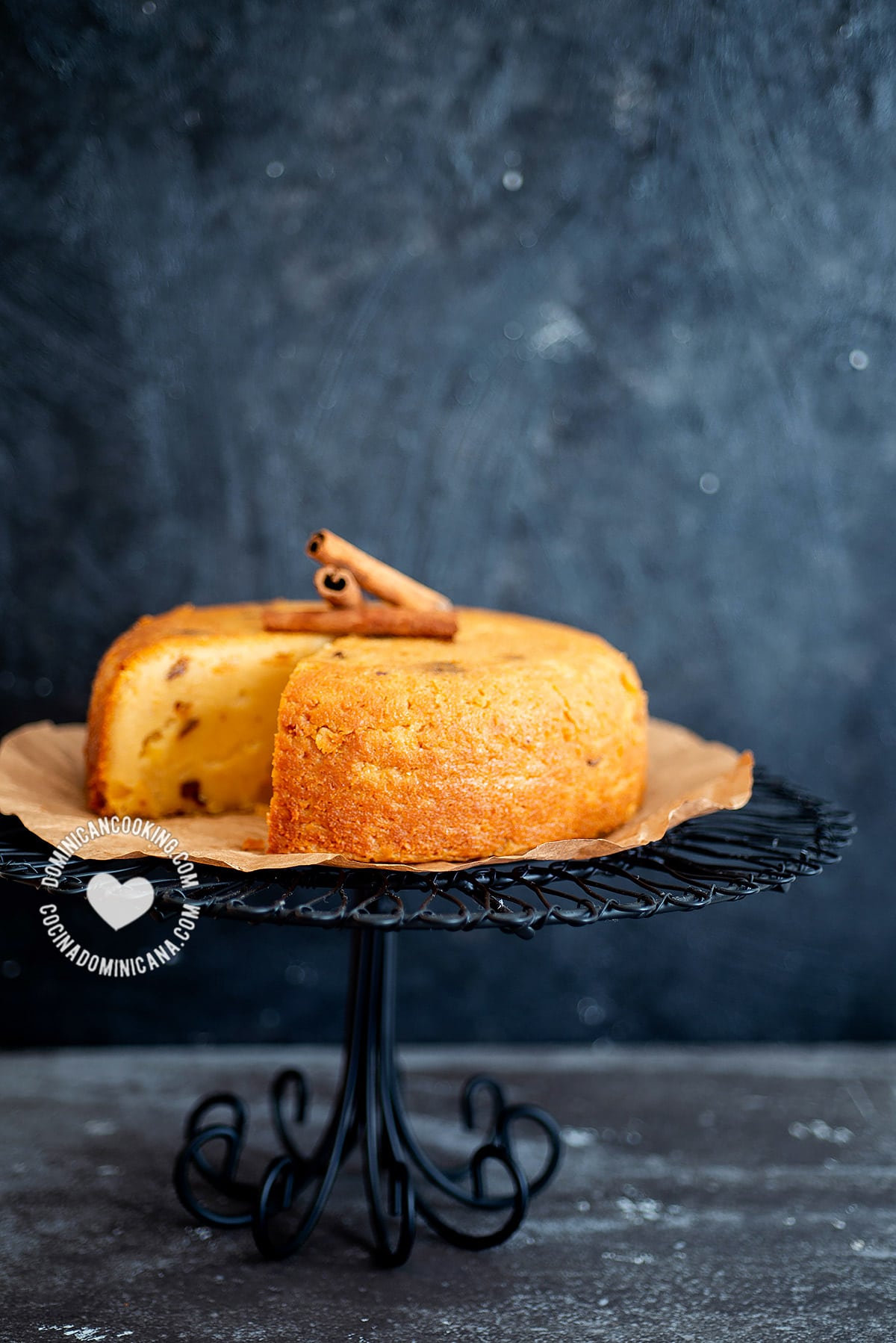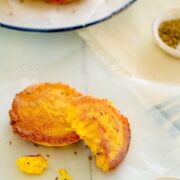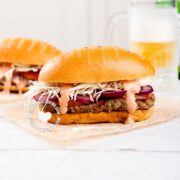Arepa is a common food name throughout Latin America, but Dominican arepa is a name reserved for the cornmeal and coconut cake we all know and love.
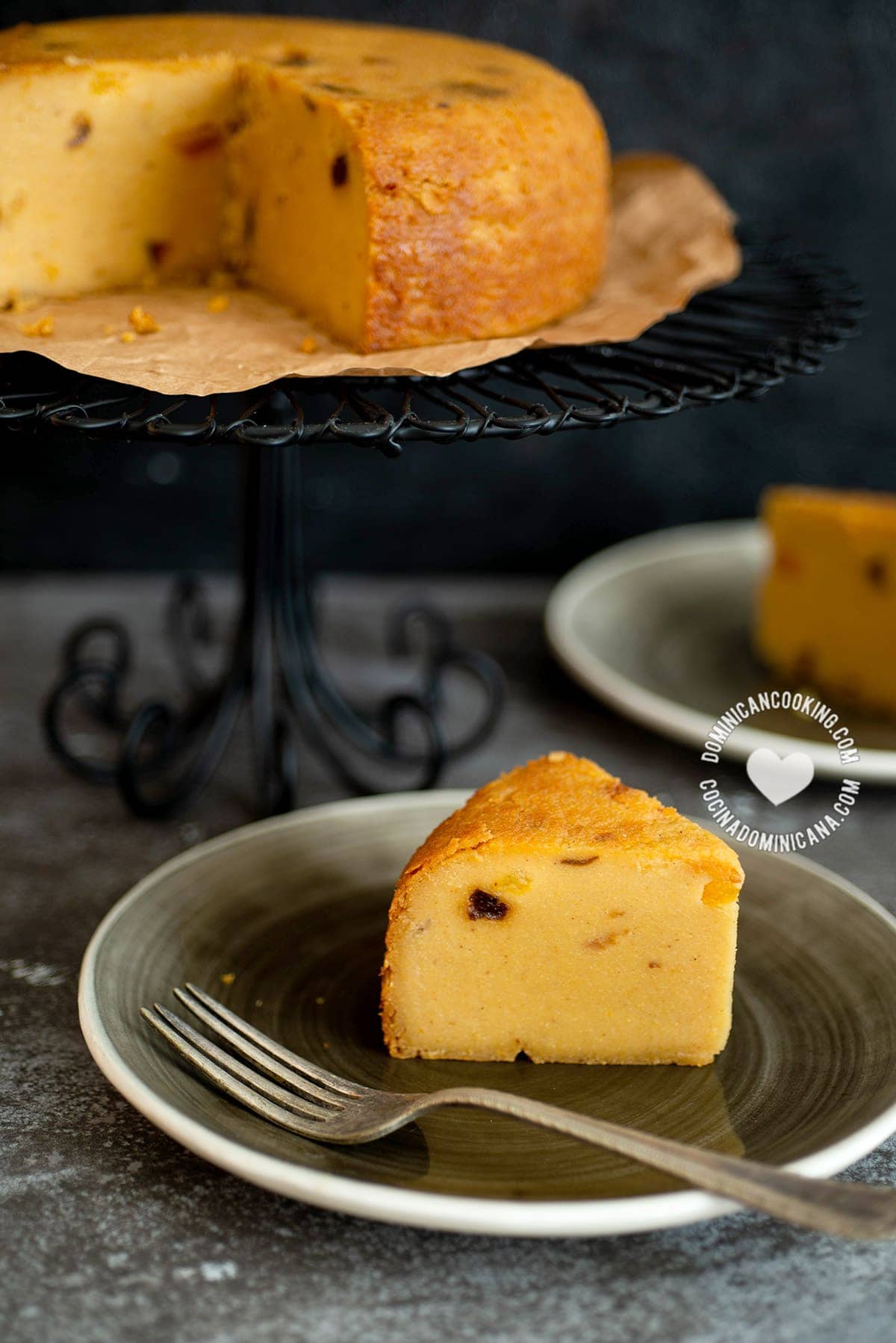
Why we ❤️ it
What is arepa? Well, the answer will very well depend on who you ask, and where they came from [1, 2]. Let's start with Dominican arepa, this beloved, spiced dessert that we absolutely rave about.
What's Dominican arepa?
In the Dominican Republic, Arepa is a dense, unleavened cornmeal and coconut cake traditionally prepared in a dutch oven on top of hot charcoal. A metal lid is placed on the pot, then more red-hot charcoal is put on the lid. This led to the expression "como la arepa: fuego por arriba y fuego por abajo" (like arepa: fire underneath, fire on top), meaning being in a crossfire, or unsustainable situation.
Arepa is a popular dish, and loved by all, but is considered one of those poor man's dishes: the ingredients are inexpensive, the cooking does not require great expertise, and it can be made with basic utensils. A savory version known as arepa salada is also popular as a breakfast or dinner dish.
Torta or arepa?
In most of the country, arepa is a name reserved for the Dominican cake we all know and love. But to complicate matters, in the Cibao and northwestern regions, this dish is called "torta" --standard Spanish for "cake"-- or "toita", as I'd like to joke, in my best feigned Cibaeño accent. In this area of the country, the name arepa is reserved for what in the rest of the country is known as yaniqueque.
Are you sufficiently confused? I don't blame you.
Arepa elsewhere
There are several Latin American dishes with the same name but have little to nothing in common with the Dominican arepa.
Colombian and Venezuelan arepas are a savory flatbread that is served filled with meat, cheese, and vegetables. They are also relatively popular in the Dominican Republic where we call them Venezuelan Arepas.
About our recipe
As we mentioned above, the traditional Dominican Arepa de Maiz recipe calls for a charcoal-burning stove. Unfortunately (?) few of us urban dwellers happen to have an old-fashioned anafe around. Assuming you are not equipped to bake it the traditional way, for this recipe we will use a regular oven.
Different homes will have different combinations of spices and ingredients for this dessert, but the recipe will still remain fairly similar between homes. If you have a different version, we'd love to hear it.

Recipe
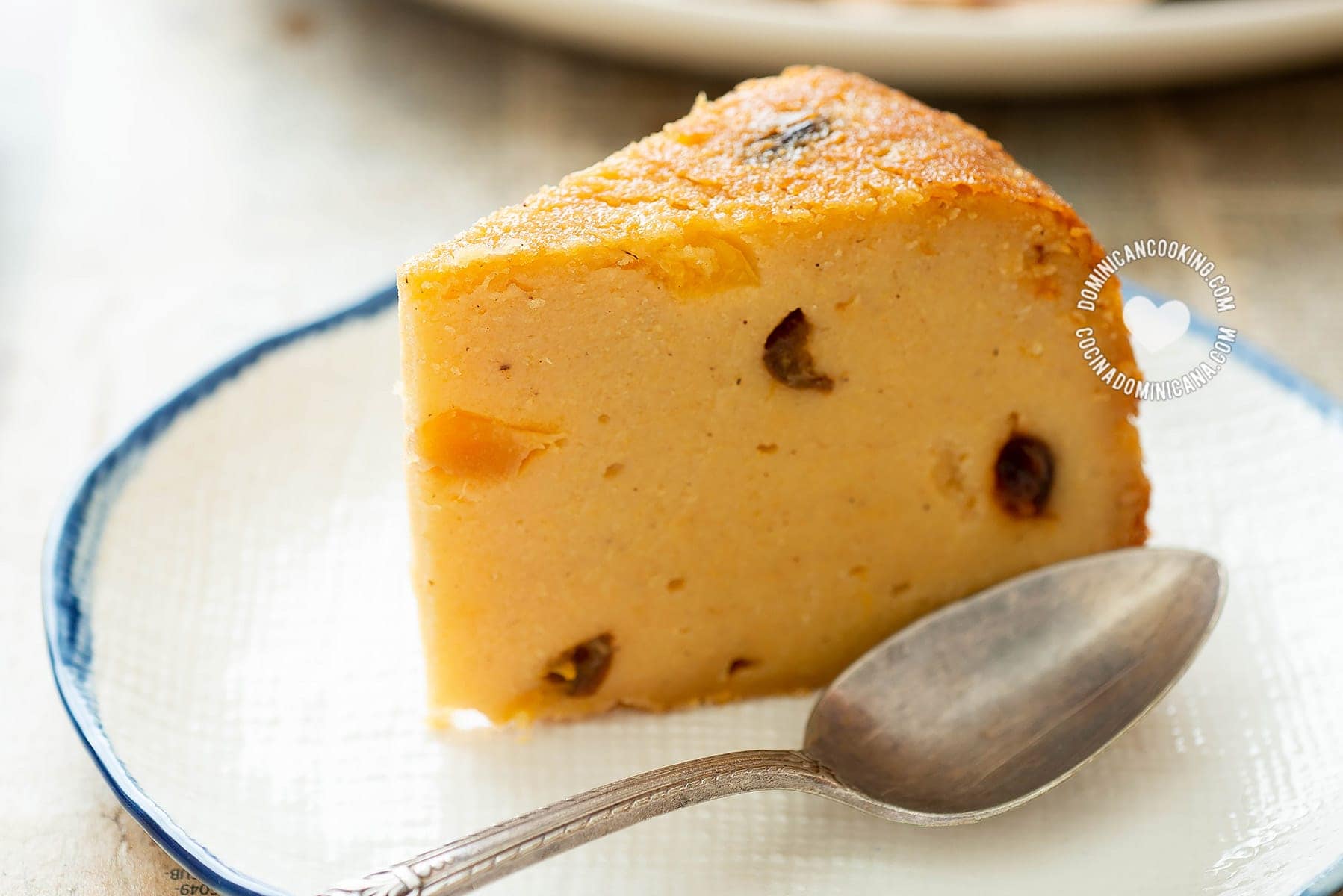
[Recipe + Video] Dominican Arepa (Cornmeal and Coconut Cake)
Ingredients
- 1 tablespoon butter (salted), (for buttering baking pan)
- 3 tablespoons butter (salted)
- 2 cup cornmeal
- 3 ½ cup whole milk
- 2 ½ cup coconut milk
- ½ teaspoon salt
- ½ cup raisins, (I used dark and sultanas mixed)
- 4 cinnamon sticks
- 1 ½ cup brown sugar
Instructions
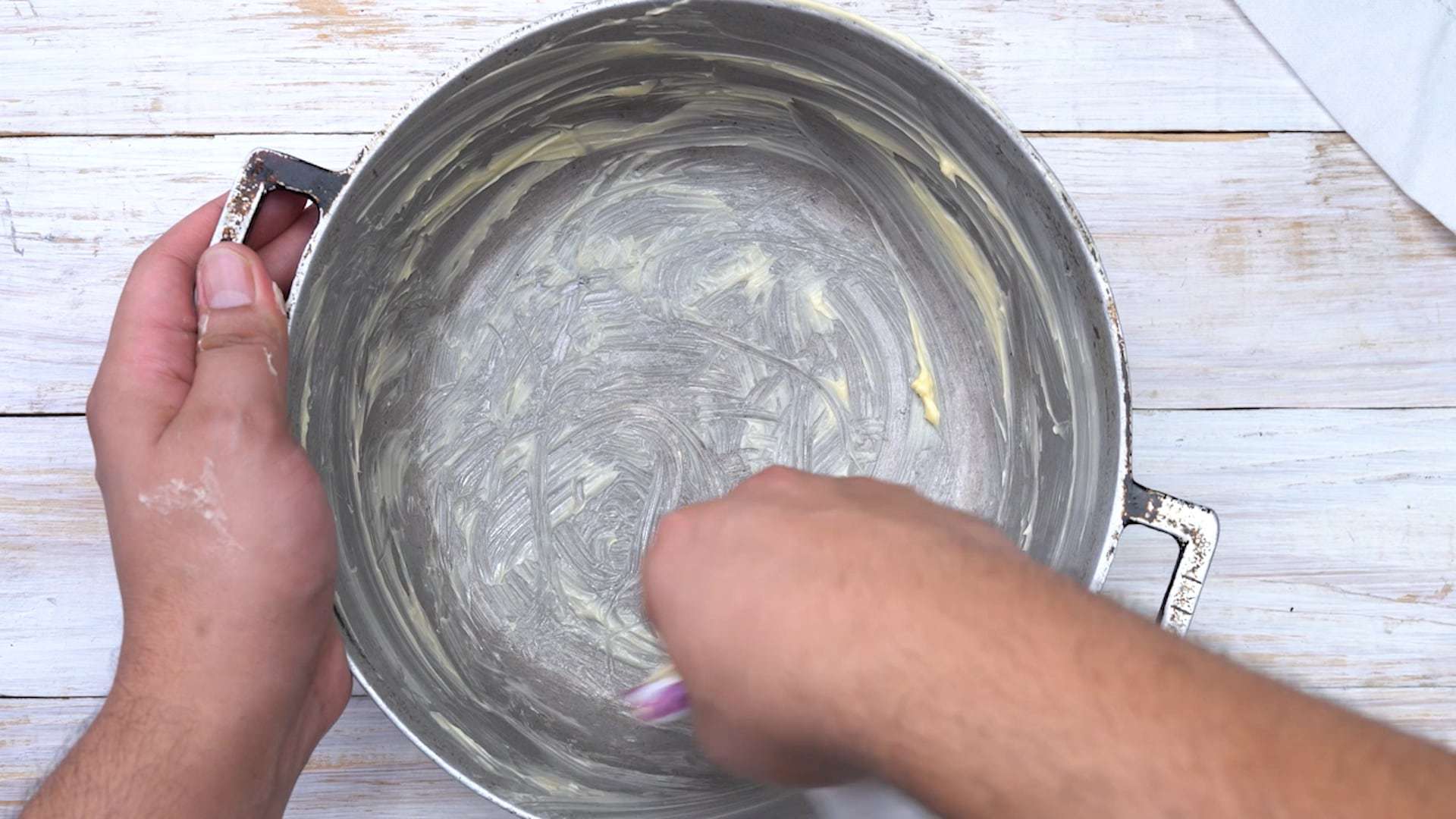 Greasing mold: Butter a 2 ½ quart [2 ½ lt] baking pan (see notes).
Greasing mold: Butter a 2 ½ quart [2 ½ lt] baking pan (see notes).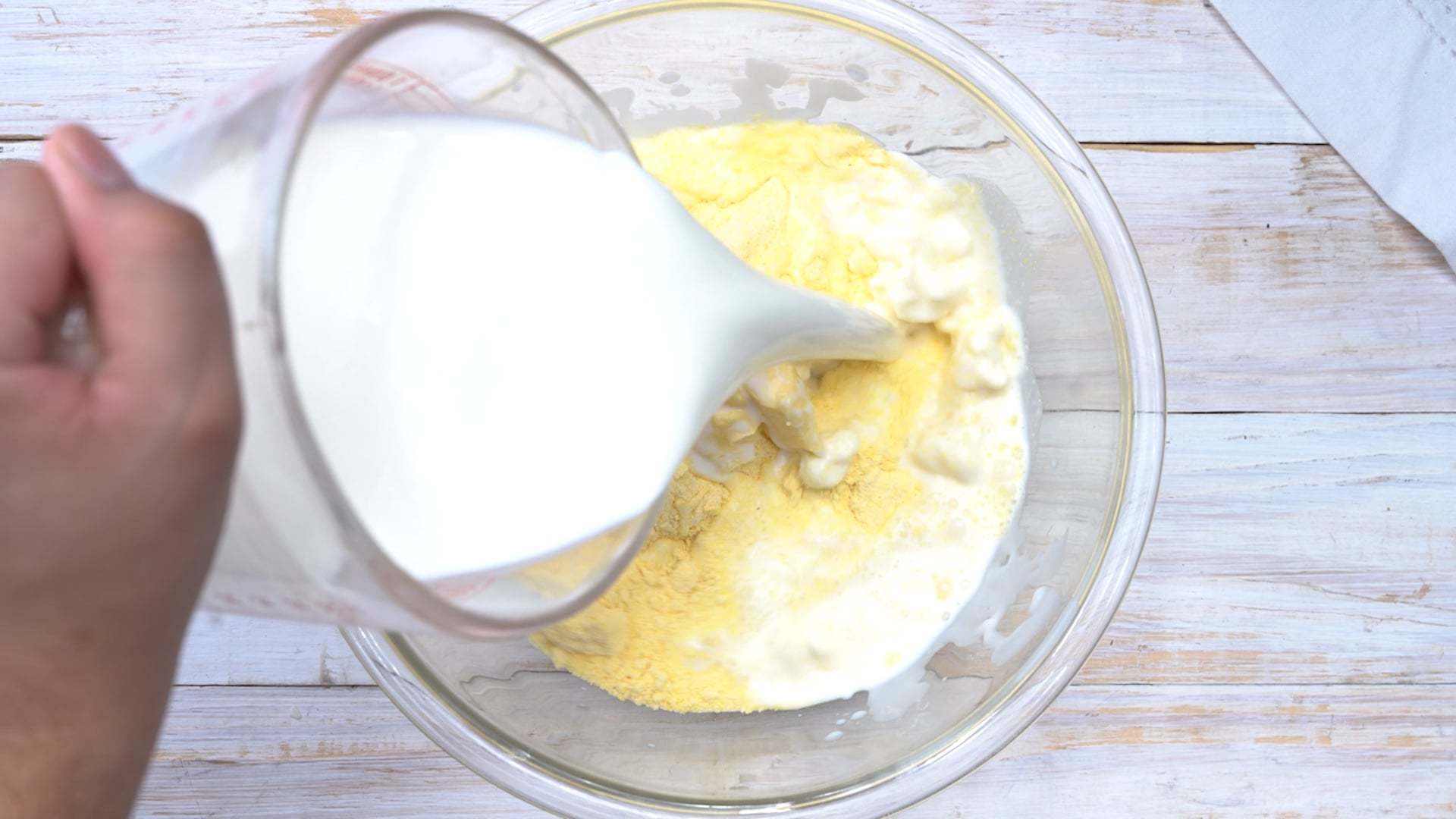 Mixing: Mix butter, cornmeal, milk, coconut milk, salt, raisins, cinnamon, and sugar.
Mixing: Mix butter, cornmeal, milk, coconut milk, salt, raisins, cinnamon, and sugar.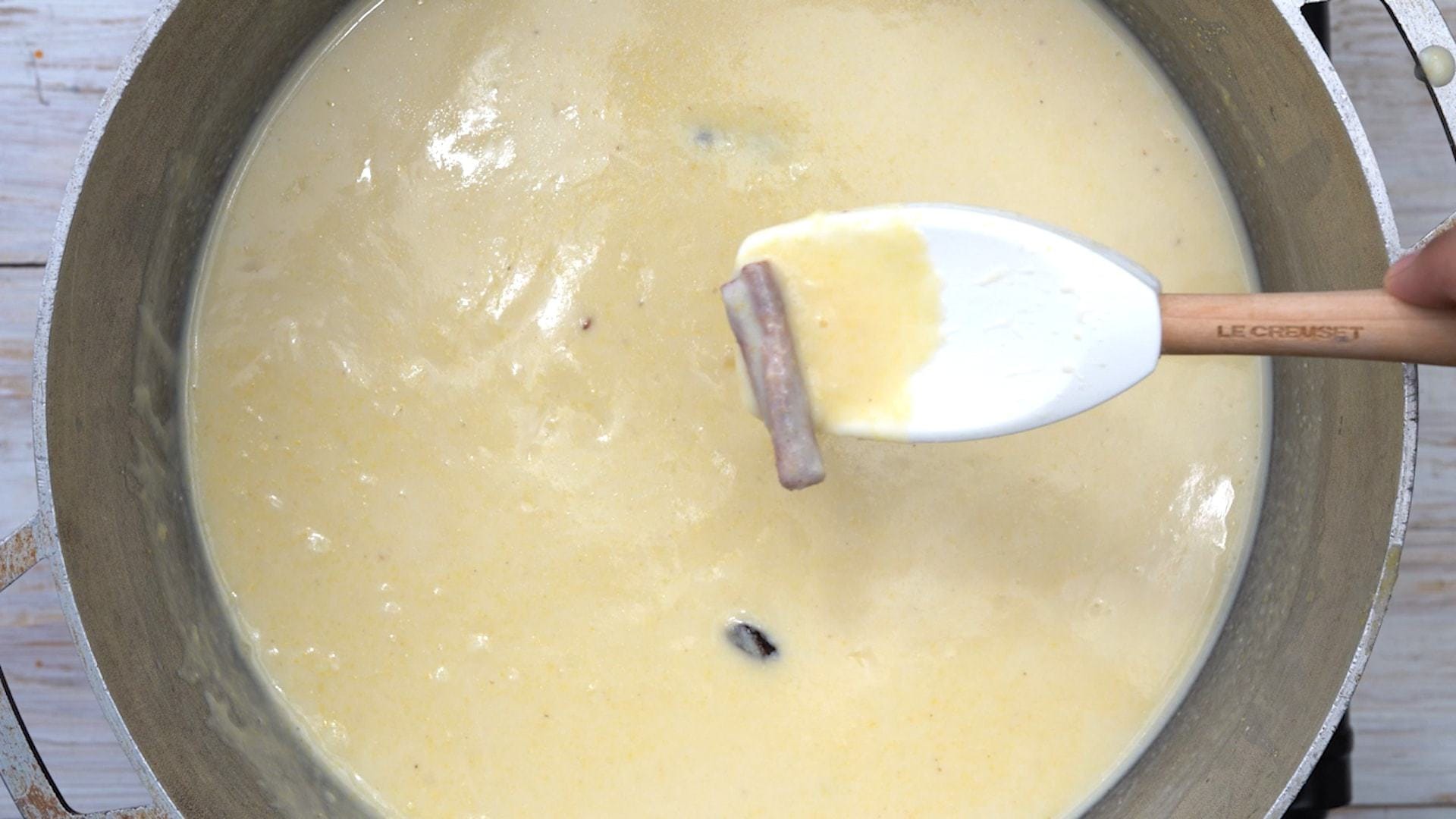 Cooking: Stir the batter with a spatula and pour into a 3 quart [3 lt] cooking pot and heat on the stove over medium heat, stirring constantly to avoid sticking.When it breaks the boil, lower the heat and continue stirring until it thickens enough that if you scoop up a spoonful and you flip the spoon upside down it does not fall. Remove the cinnamon sticks.
Cooking: Stir the batter with a spatula and pour into a 3 quart [3 lt] cooking pot and heat on the stove over medium heat, stirring constantly to avoid sticking.When it breaks the boil, lower the heat and continue stirring until it thickens enough that if you scoop up a spoonful and you flip the spoon upside down it does not fall. Remove the cinnamon sticks.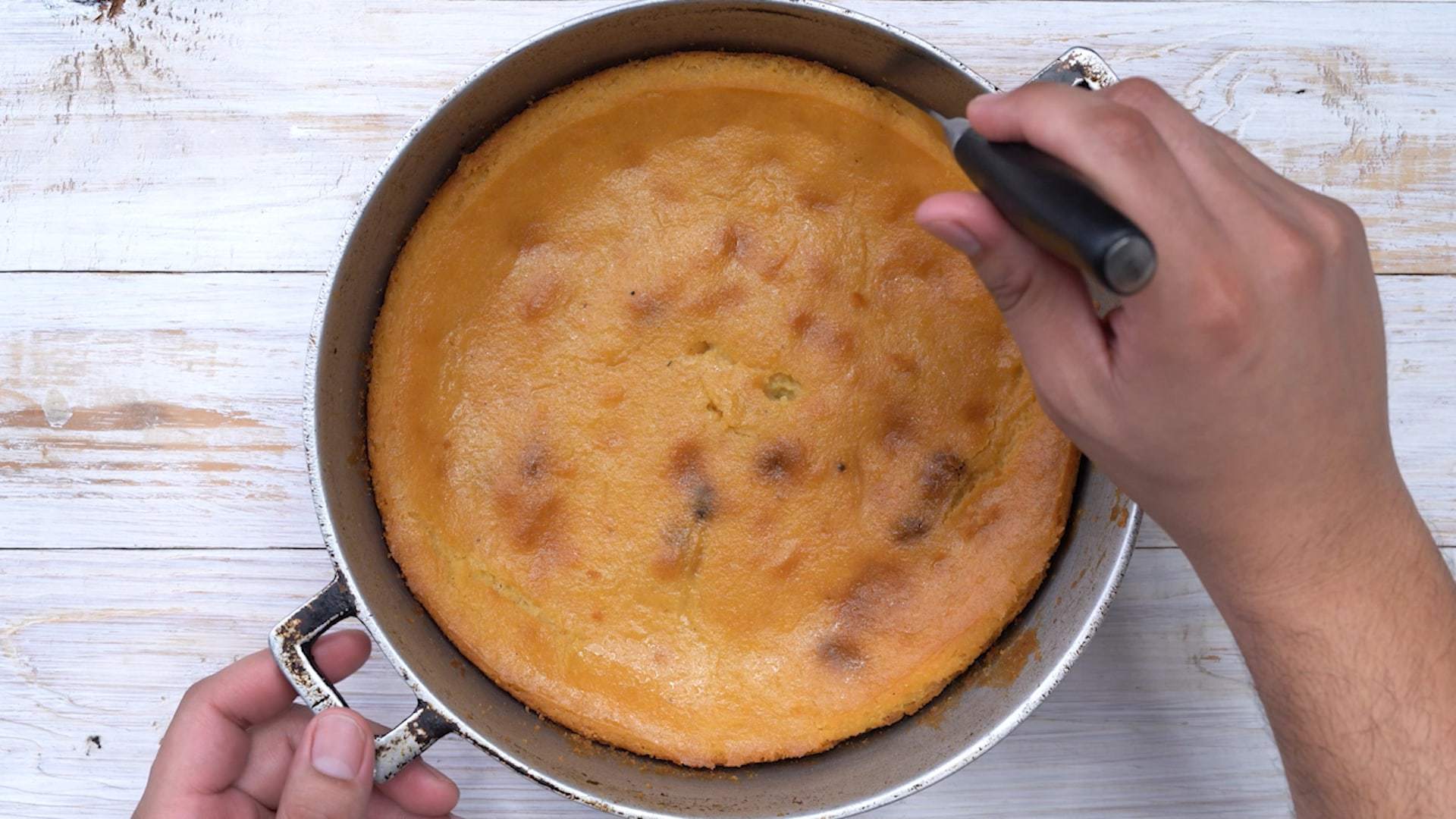 Baking: Pour batter into the pan and bake for 40 minutes preheated oven to 350 ºF [175 ºC]. It should be golden brown on top. Let it cool down to room temperature before removing from the pan.
Baking: Pour batter into the pan and bake for 40 minutes preheated oven to 350 ºF [175 ºC]. It should be golden brown on top. Let it cool down to room temperature before removing from the pan.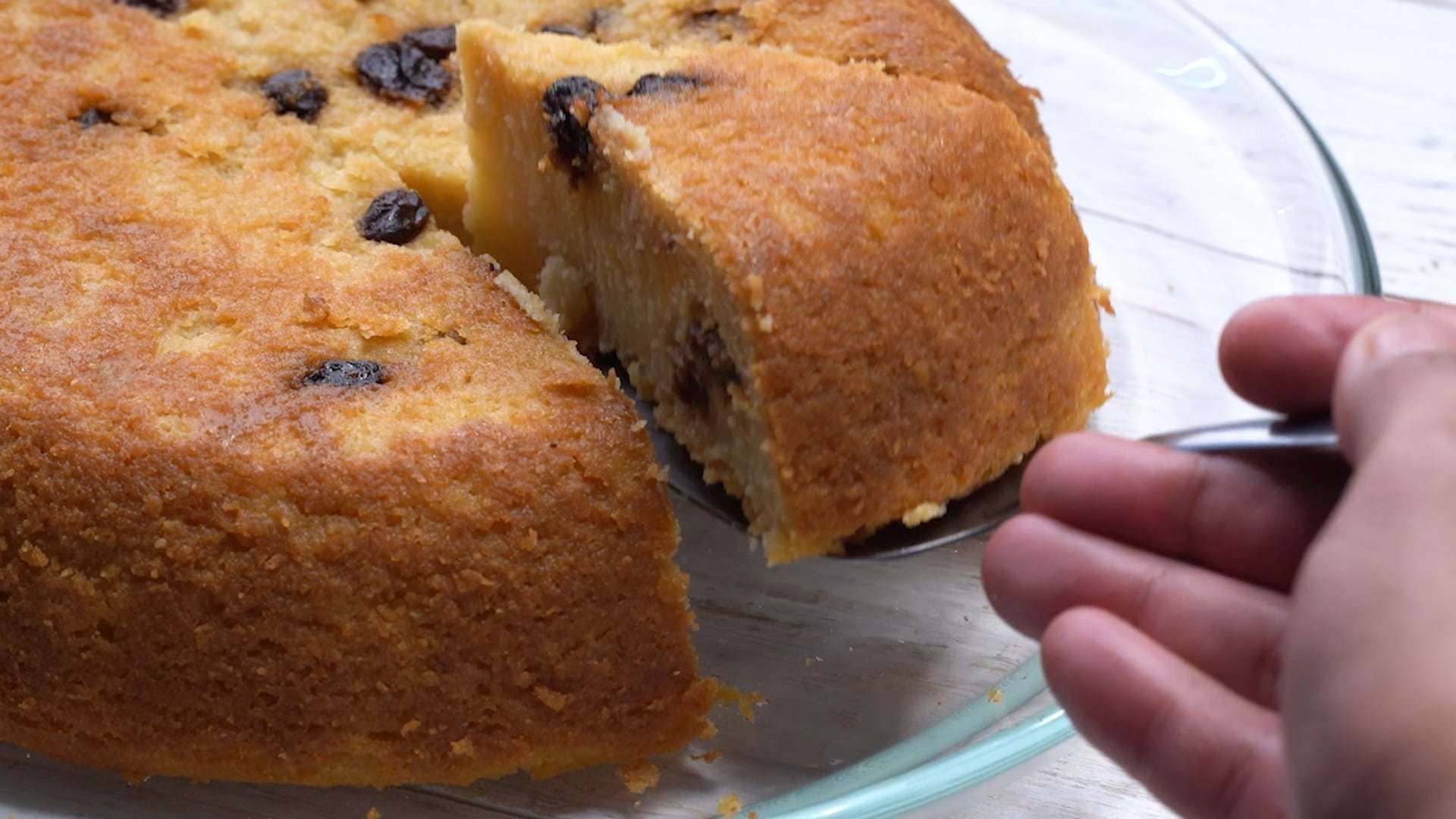 Serving: Serve with hot cocoa or coffee.
Serving: Serve with hot cocoa or coffee.
Video
Tips and Notes
Nutrition
Nutritional information is calculated automatically based on ingredients listed. Please consult your doctor if you need precise nutritional information.


